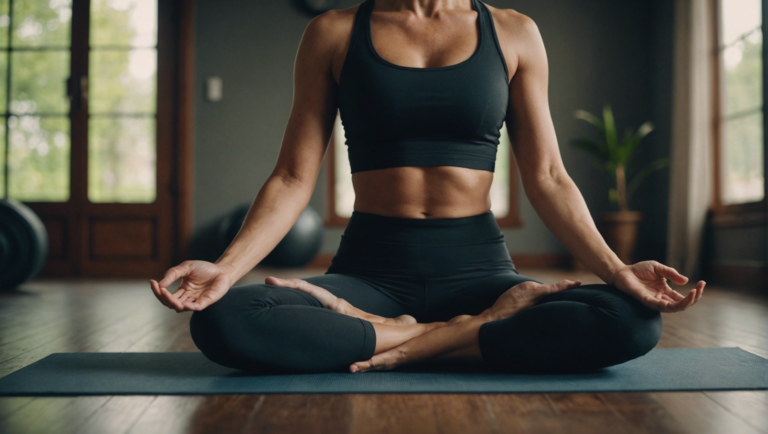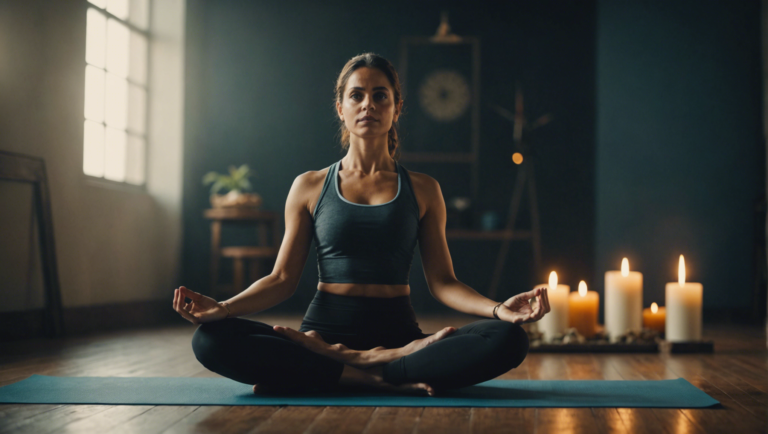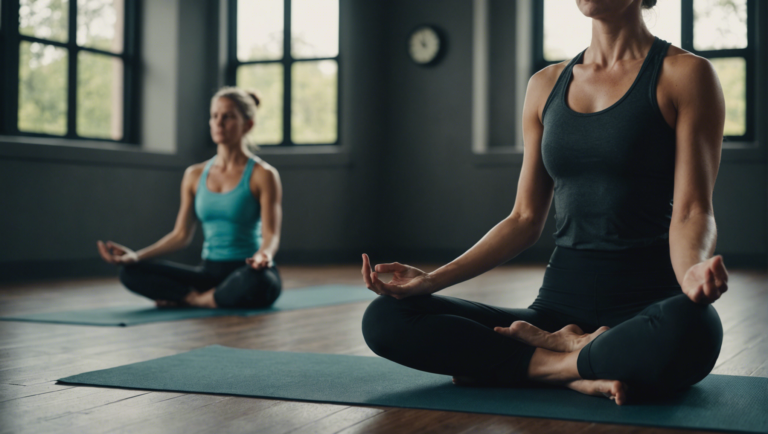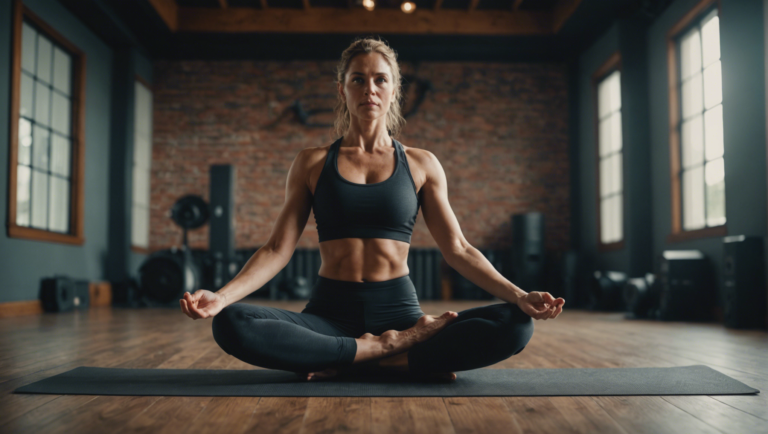Does Yoga Qualify As A Beneficial Exercise?
The Multifaceted Health Benefits of Yoga as Exercise
When examining the realm of physical fitness, it’s imperative to consider the diverse methods individuals employ to achieve their health and wellness goals. Among the myriad of options, yoga stands out not just as a practice steeped in ancient traditions but as a modern-day panacea for a wide range of ailments, both physical and mental. This venerable exercise regimen offers a holistic approach to well-being, underscoring its unique position in the landscape of health and fitness.
The Comprehensive Physical Benefits of Yoga
Yoga is not merely an exercise; it is a comprehensive system that promotes physical health in ways many might not expect. Its benefits extend far beyond flexibility—a common association with the practice. Yoga exercises, or asanas, are designed to strengthen the body, enhance endurance, and improve balance. Each pose targets specific muscle groups, promoting strength and flexibility. Furthermore, through the practice of various asanas, core stability is significantly enhanced, contributing to better posture and alleviating back pain.
Cardiovascular health also receives a notable boost from regular yoga practice. Despite its generally low-impact nature, certain styles of yoga, such as Vinyasa or Ashtanga, are dynamic and physically demanding. These styles elevate the heart rate during the practice, which can contribute to a healthier heart and improved circulation. Additionally, yoga’s emphasis on deep, mindful breathing plays a crucial role in this aspect, enhancing lung capacity and improving oxygenation throughout the body.
Yoga’s Profound Impact on Mental Well-being
The influence of yoga extends well into the realm of mental health, illustrating its multifaceted approach to well-being. Stress reduction is one of yoga’s most celebrated benefits. The practice incorporates breathing exercises, meditation, and physical movements that together foster a state of relaxation and mindfulness. This combination helps in lowering cortisol levels, the stress hormone, thus contributing to a calmer mind.
Moreover, yoga has been recognized for its ability to combat depression and anxiety. The mindful aspect of yoga, which encourages practitioners to stay present and engage deeply with their movements and breath, can create a meditative state. This state not only reduces present stress but also aids in developing coping strategies, enhancing resilience against future stressors. As mental health awareness grows, the value of yoga as a complementary treatment for mental health issues becomes increasingly apparent.
Enhanced Mind-Body Connection
One of yoga’s unique attributes is its ability to heighten the mind-body connection. This is achieved through the practice of asanas combined with pranayama (breath control) and meditation. The emphasis on mindful movements helps practitioners become more attuned to their bodies’ needs, limitations, and potentials. This heightened awareness can lead to better decision-making in lifestyle choices, diet, and exercise, further enhancing overall health.
Practicing yoga regularly cultivates a greater sense of self-awareness and mindfulness, which can transcend the mat and influence various aspects of one’s life. From improved concentration and focus to a deeper sense of peace and contentment, the mental clarity achieved through yoga is invaluable.
Embracing Yoga for Holistic Health
Given the extensive health benefits it offers, embracing yoga as part of one’s exercise regimen is not merely beneficial but could be transformative. Its adaptability allows for inclusion regardless of age, fitness level, or physical limitations, making yoga a universally accessible path to health and wellness. Whether seeking to enhance physical strength and flexibility, improve cardiovascular health, or achieve a state of mental clarity and peace, yoga provides a comprehensive solution.
In essence, yoga transcends the traditional boundaries of exercise, offering a profound and holistic approach to health. Its benefits are comprehensive, addressing physical, mental, and spiritual well-being. As such, yoga does not just qualify as beneficial exercise; it stands as an essential component of a balanced approach to health and wellness, deserving of a central place in the modern health paradigm.
Comparing Yoga to Conventional Exercise Modalities
Yoga vs. Traditional Exercise: A Detailed Comparison
Yoga, an ancient practice rooted in over 5,000 years of Indian philosophy, has surged in popularity as a comprehensive approach to physical and mental well-being. Traditional exercise modalities, encompassing a wide array of activities from running and cycling to weightlifting, have long been established cornerstones of physical fitness. Both have indisputable benefits, yet they offer distinct approaches to health and fitness. This exploration delves into how these practices compare, revealing which might best suit your wellness journey.
Diving Into the Essence of Yoga
At its core, yoga transcends physical activity, intertwining spiritual growth, breathing techniques, and meditation with bodily movements. It’s a holistic approach, focusing not only on enhancing physical strength and flexibility but also on promoting mental relaxation and clarity. The variety within yoga—from gentle Hatha to the more physically demanding Ashtanga—allows it to be accessible and beneficial for individuals at any fitness level.
Understanding Traditional Exercises
In contrast, traditional exercises typically emphasize physical aspects such as cardiovascular health, muscle strength, and endurance. These activities are often categorized into aerobic exercises like running and swimming, and strength training like lifting weights and resistance training. The primary goal is to improve physical health, which indirectly contributes to mental well-being by reducing stress and enhancing self-esteem.
Comparing Health Benefits
The health benefits of each practice are significant yet vary in focus. Yoga is renowned for its ability to reduce stress, thanks to its meditative elements, and improve flexibility and balance. It also has a noted positive impact on mental health, aiding in depression and anxiety relief. Traditional exercise, on the other hand, is highly effective in weight management, boosting cardiovascular health, and building muscle strength, which are critical components of physical health.
Evaluating the Impact on Mental Well-being
When it comes to mental health, yoga offers a more explicit benefit due to its meditative aspects. The practice encourages mindfulness, which has been shown to lower cortisol levels, thereby reducing stress. Traditional exercises also promote mental health improvements, primarily through the release of endorphins, known as the body’s natural mood elevators. However, the intensity of traditional workouts can sometimes exacerbate stress for certain individuals, unlike yoga’s generally calming influence.
Suitability for Diverse Populations
Yoga’s adaptability makes it especially appealing. Whether you’re a seasoned athlete or someone who’s new to fitness, yoga offers a range of intensities and styles to accommodate different physical abilities and preferences. Traditional exercises, while versatile, often require a basic level of physical fitness, making them less accessible to beginners or those with certain physical limitations.
Integrating Into Lifestyle
Adopting a fitness routine that aligns with your lifestyle is crucial for long-term adherence. Yoga’s flexibility in practice location—be it a studio, home, or outdoors—and its minimal need for equipment render it highly compatible with various lifestyles. Traditional exercises might necessitate access to specific venues or equipment, potentially posing a barrier to consistent practice.
Making a Choice: Which Is Right For You?
The decision between yoga and traditional exercise modalities hinges on personal goals, preferences, and physical considerations. If you’re drawn to a holistic approach that encompasses physical, mental, and spiritual health, yoga could be your path. However, if you’re focused primarily on enhancing physical fitness and enjoy dynamic, high-intensity workouts, traditional exercises might be more your speed.
A Harmonious Approach: Blending the Best of Both Worlds
Rather than viewing yoga and traditional exercises as mutually exclusive, consider the benefits of incorporating both into your fitness regimen. This balanced approach can offer comprehensive health benefits, marrying the physical intensity of traditional exercises with yoga’s focus on flexibility and stress reduction. Ultimately, the best fitness practice is one that nurtures your body, soothes your mind, and fits seamlessly into your life, potentially blending elements of both yoga and traditional physical activities.
Understanding the Psychological Advantages of Yoga Practice
Yoga, an ancient practice with roots stretching back thousands of years, has transcended its traditional boundaries to become a global phenomenon recognized for its extensive benefits on physical health. However, its impact extends far beyond the physical realm, offering profound psychological advantages that can significantly enhance an individual’s quality of life. Delving into the depths of these psychological benefits, we uncover a wealth of mental and emotional enhancements that contribute to an improved state of well-being.
Exploring the Connection Between Yoga and Stress Reduction
A primary psychological advantage of yoga lies in its exceptional ability to reduce stress. In the bustling rhythm of modern life, stress has become a ubiquitous adversary, impacting people from all walks of life. Yoga, through its combination of physical postures, controlled breathing techniques, and meditation, acts as a holistic stress management tool. By engaging in yoga practice, individuals can stimulate the parasympathetic nervous system – the part of the nervous system responsible for ‘rest and digest’ functions – which in turn reduces the production of stress hormones such as cortisol. Evidence from numerous studies highlights the efficacy of yoga in lowering stress levels, thus fostering a sense of inner peace and calm.
Enhancing Emotional Health and Resilience
Yoga’s influence on emotional health is profound. Regular practitioners often report enhanced mood, increased feelings of happiness, and a reduction in symptoms associated with depression and anxiety. This uplift in emotional wellbeing can be attributed to yoga’s ability to balance neurochemical levels in the brain, including an increase in the production of serotonin, known as the ‘feel-good’ neurotransmitter. Furthermore, yoga equips individuals with the skills to cope with emotional distress in a healthier manner, promoting resilience and emotional stability. Through mindfulness practices and meditation, yoga encourages a mindful awareness of the present moment, enabling practitioners to observe their thoughts and emotions without judgment. This heightened sense of awareness is instrumental in developing emotional intelligence and resilience.
Cultivating Mindfulness and Enhanced Concentration
Mindfulness, a state of active, open attention to the present moment, is a cornerstone of yoga practice. By fostering a mindful approach to life, yoga helps individuals to break free from the automatic pilot mode that characterizes much of modern living. This shift in perspective encourages a more engaged and attentive approach to daily activities, improving concentration and focus. Practitioners of yoga often report a greater capacity for concentration and a reduction in the distractions of the mind, benefits that can significantly improve productivity and efficiency in both professional and personal spheres.
Promoting Better Sleep Quality
The psychological benefits of yoga also extend into the realm of sleep. In a society where sleep disorders and insomnia are increasingly common, yoga offers a natural remedy for improving sleep quality. Through its calming effect on the mind and body, yoga practice can facilitate a smoother transition into deep, restorative sleep. Moreover, techniques learned in yoga, such as deep breathing and relaxation exercises, can be specifically employed to combat sleeplessness, promoting healthier sleep patterns and contributing to overall well-being.
Yoga’s psychological advantages are backed by a growing body of scientific research that underscores its potential as a therapeutic tool for enhancing mental health. From stress reduction and improved emotional health to enhanced mindfulness and better sleep, the psychological benefits of yoga are manifold. Its holistic approach not only addresses the physical aspects of health but also prioritizes mental and emotional well-being, making it a comprehensive practice for those seeking a balanced and fulfilling life. As the world continues to recognize the importance of mental health alongside physical health, yoga stands out as a valuable practice capable of harmonizing the two, leading to a healthier, happier human experience.
Yoga’s Accessibility: A Bridge to Holistic Health for All Ages
The timeless practice of yoga, with its roots buried deep in ancient history, has evolved into a universally accessible tool for achieving holistic health. It transcends age barriers, making it a valuable asset for individuals seeking a comprehensive approach to well-being. Through a blend of physical postures, breathing exercises, and meditation, yoga offers a unique avenue towards enhancing physical, mental, and emotional health. This article delves into the accessibility of yoga and its role as a bridge to holistic health for all ages.
The Universality of Yoga: A Multi-Generational Approach to Wellness
Yoga’s accessibility lies in its adaptability. Whether you are a child learning to navigate the complexities of growing up or a senior citizen seeking to improve mobility and balance, yoga offers tailored practices that cater to every age group’s unique needs. For children, yoga can enhance concentration, reduce stress, and build self-esteem. For adults, it becomes a tool to combat the sedentary lifestyle effects, offering relief from stress and physical ailments. In the golden years, yoga provides gentle ways to maintain activity levels, improve flexibility, and reduce the risk of falls.
Bridging Physical Health and Mental Well-Being
One of yoga’s greatest strengths is its holistic approach to health, emphasizing the interconnection between body and mind. Regular practice improves cardiovascular health, enhances flexibility, builds muscle strength, and promotes better breathing habits. Beyond the physical benefits, yoga stands out for its positive impacts on mental health. It encourages mindfulness, reduces symptoms of stress and anxiety, and fosters a sense of inner peace. By integrating yoga into daily life, individuals of all ages can experience a comprehensive enhancement of well-being.
Adapting Yoga for Every Body
Yoga’s accessibility is further exemplified through its adaptability to various physical abilities and conditions. From gentle forms like Hatha Yoga, suitable for beginners and seniors, to more dynamic styles like Vinyasa for those seeking a vigorous workout, yoga embraces diversity. Moreover, with the rise of chair yoga and other modified practices, even individuals with limited mobility can reap yoga’s benefits. This inclusivity underscores yoga’s role as a bridge to health, ensuring that everyone, regardless of physical capability, has the opportunity to engage in this transformative practice.
Fostering Community and Support
Beyond its physical and mental benefits, yoga creates a sense of community among practitioners. Group classes, whether in-person or virtual, offer a space for individuals to connect, share experiences, and support each other on their wellness journeys. This community aspect is particularly valuable for older adults, who may experience isolation, as it provides not only social interaction but also motivation to maintain an active lifestyle.
Yoga in the Digital Age: Expanding Access Through Technology
The digital revolution has markedly increased yoga’s accessibility. Online platforms, apps, and virtual classes have made it possible for people to practice yoga anytime, anywhere. This technological advancement has democratized access to yoga, breaking down geographical and financial barriers and allowing individuals to explore various yoga styles at their own pace. The digital age has ensured that yoga’s holistic health benefits are within reach of a wider audience, further cementing its status as a practice for all ages.
Yoga’s accessibility makes it a powerful tool for achieving holistic health across the lifespan. Its adaptability to various ages, physical conditions, and preferences underscores its universality. As a bridge to holistic health, yoga offers more than just physical benefits; it nurtures mental and emotional well-being, fosters community, and adapts to the modern world’s demands through digital means. For those seeking a comprehensive approach to health that embraces the whole person, yoga presents an open and accessible path.
Integrating Yoga into Daily Life: Practical Tips and Considerations
The ancient practice of Yoga, with its roots steeped in Indian philosophy, has evolved into a universally embraced regimen for enhancing physical, mental, and spiritual well-being. Its adaptability and diverse range of styles make it an incredibly accessible form of exercise and mindfulness practice, suitable for individuals of varying ages and fitness levels. Embracing yoga as a part of daily life can lead to significant improvements in stress levels, flexibility, strength, and overall health. However, integrating this practice into a busy schedule and maintaining consistency can be challenging. Below, find practical tips and considerations that can help in seamlessly blending yoga into your everyday routine.
Crafting a Personalized Yoga Routine
A personalized yoga routine is key to a sustainable practice. Begin by assessing your current fitness level, personal goals, and any physical limitations. Whether seeking to enhance flexibility, reduce stress, or build strength, there’s a style of yoga that aligns with every goal. For beginners, Hatha or Iyengar yoga can offer a gentle introduction, focusing on foundational postures and alignment. More dynamic styles like Ashtanga or Vinyasa may appeal to those looking for an intense workout. Starting with shorter sessions can help in forming a habit, gradually increasing the duration as your body adapts.
Finding the Right Time and Space
Identifying the most suitable time and space for your yoga practice is crucial. Early mornings are ideal for many, offering a tranquil start to the day, but any time that aligns with your natural rhythm and schedule can work. Designate a specific area in your home as your yoga space—somewhere quiet, comfortable, and with minimal distractions. Equipping this space with essential props like a yoga mat, blocks, and a blanket can enhance your practice. If space is limited, a clear spot where a mat can be rolled out is sufficient.
Integrating Yoga Beyond the Mat
Yoga is more than just physical postures; it’s a holistic discipline incorporating breath work, meditation, and ethical principles. mindfulness and breathing exercises throughout the day can extend the benefits of your mat practice. Simple practices like taking deep, conscious breaths during breaks or practicing mindfulness during routine activities can reinforce the mental health benefits of yoga, such as enhanced focus and reduced anxiety.
Embracing Community and Online Resources
Joining a yoga community or leveraging online resources can provide valuable support and motivation. Many find that attending classes or practicing with others can enhance their commitment and enjoyment. For those with time or mobility constraints, online classes, apps, and tutorials offer flexibility, allowing you to practice at your own pace and on your own schedule. Participating in forums or social media groups dedicated to yoga can offer inspiration, advice, and a sense of belonging.
Setting Realistic Goals and Being Patient
Progress in yoga is personal and non-linear. Setting realistic goals and adopting a patient, non-competitive attitude towards your practice is important. Celebrate small achievements, like mastering a new pose or noticing improvements in your breathing. It’s also vital to listen to your body and adjust your practice as needed, avoiding injury and ensuring yoga remains a joyful and beneficial part of your life.
Staying Flexible and Adaptable
Life’s unpredictability may sometimes disrupt your yoga routine. Staying flexible and open to adjusting your practice can help maintain consistency. This could mean opting for a restorative session on days when energy is low or experimenting with different styles to keep the practice engaging. Remember, the essence of yoga is balance and harmony, not rigidity.
By considering these practical tips, integrating yoga into daily life becomes an achievable and enriching endeavor. Beyond its physical benefits, yoga offers a pathway to greater self-awareness and mental clarity, enhancing one’s quality of life. Whether as a morning ritual or a flexible, woven-in practice, yoga’s principles can guide us toward a more balanced and centered existence.
Conclusion
Embarking on a journey through the profound layers of yoga provides not merely an exploration of its multifaceted health benefits as exercise but also navigates through its unique distinction from conventional exercise modalities. Delving into the essence of yoga reveals a comprehensive regimen that transcends physical activity, extending its reach into the realms of psychological fortification and holistic well-being. This article has traversed the landscape of yoga’s benefits, its comparative edge over traditional fitness routines, the mental rejuvenation it offers, its universal accessibility, and practical strategies for weaving its practice into the tapestry of daily life.
Yoga stands out in the fitness landscape for its integration of physical, mental, and emotional health benefits, setting a stark contrast against the backdrop of conventional exercises that often prioritize physical outcomes over holistic well-being. It is this incorporation of mindfulness, breath control, and the meditative aspects that not only enhances flexibility, strength, and balance but also propels yoga into a league of its own. These attributes contribute to an improved quality of life, reduced stress levels, and a harmonious balance between body and mind, encapsulating the essence of what it means to undertake a holistic approach to health and exercise.
The psychological advantages of yoga practice further accentuate its value beyond mere physical activity. Whereas typical exercise regimens may foster mental resilience indirectly through the release of endorphins, yoga intentionally cultivates mental well-being through practices focused on calming the mind, enhancing concentration, and fostering an inner sense of peace. This psychological dimension is especially pivotal in today’s fast-paced world, where stress and anxiety loom large. By offering tools to navigate life’s stresses more effectively, yoga serves not just as an exercise but as a vital life skill.
What distinguishes yoga even further is its accessibility and adaptability, acting as a bridge to holistic health for individuals across all ages and fitness levels. This inclusivity breaks down barriers to exercise, opening pathways to health and wellness that are often obstructed by the conventional conceptions of fitness. Yoga’s adaptability ensures that anyone, regardless of physical capability or age, can partake in its benefits, making it a genuinely universal practice. This universality underlines the critical role yoga can play in public health, democratizing access to practices that enhance well-being.
The integration of yoga into daily life emerges not as a daunting task but as a series of small, intentional steps that collectively forge a path towards a healthier, more mindful lifestyle. Practical tips such as starting with simple poses, finding a community of practitioners, or even dedicating a few minutes daily to mindfulness can significantly lower the threshold for beginning a yoga practice. These considerations underscore the ease with which yoga can become an integral part of one’s daily routine, offering a practical approach to achieving sustained health and well-being.
The journey through the landscape of yoga, from its holistic health benefits, distinct advantages over conventional exercise, psychological upliftment, accessibility, and practical integration into daily life, underscores the transformative potential of this ancient practice. Yoga offers a comprehensive, inclusive, and profoundly beneficial approach to exercise that resonates not just with the body but with the mind and spirit. It stands as a testament to the enduring relevance of holistic health practices, inviting individuals from all walks of life to explore its depths. By embracing yoga, one embarks on a path of discovery, unlocking the potential for a balanced, healthy, and harmonious life.



